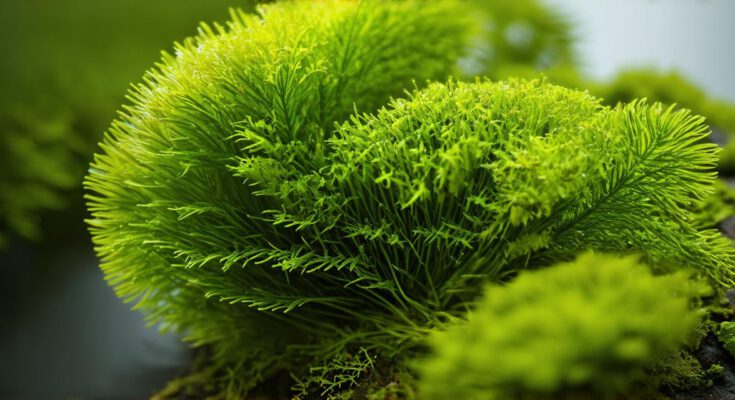Cryptogams are a diverse group of eukaryotic organisms that have evolved to form complex and fascinating structures called capsules or spores. These structures provide protection against harsh environmental conditions such as extreme temperatures, high radiation levels, and dehydration. In this comprehensive guide, we will explore the biology and classification of cryptogams, their unique features, and their role in various ecosystems.
Classification and Biology of Cryptogams
Cryptogams are classified into two main groups: fungi and plants. The majority of cryptogams are fungi, which are decomposers that break down dead organic matter into simpler compounds to be used by other organisms in the food chain. Plants, on the other hand, are primary producers that use photosynthesis to produce their own food from sunlight, water, and carbon dioxide.
Both fungi and plants have a similar basic structure, consisting of a cell wall made of cellulose and a nucleus containing genetic material. However, there are several key differences between the two groups. Fungi lack chloroplasts, which are responsible for photosynthesis in plants. Instead, fungi obtain nutrients by secreting enzymes that break down organic matter in their environment. Plants, on the other hand, have chloroplasts and use photosynthesis to produce glucose as their primary source of energy.
Capsules and Spores
One of the most distinctive features of cryptogams is their ability to form complex structures called capsules or spores. These structures provide protection against harsh environmental conditions such as extreme temperatures, high radiation levels, and dehydration. Capsules and spores are also capable of surviving in a dormant state for extended periods of time, allowing them to survive in environments where other organisms cannot.
Cryptogams can be classified into three main types based on their capsule or spore structure: fungi, mosses, and liverworts. Fungi produce simple spores called conidia, which are typically round or oval in shape. Mosses, on the other hand, produce complex capsules called gametangia that contain both male and female reproductive cells. Liverworts produce simple capsules called setae, which contain only one gametangium.
Ecological Significance of Cryptogams
Cryptogams play a vital role in many ecosystems around the world. Fungi are decomposers that help to recycle nutrients in the soil by breaking down dead organic matter and making it available to other organisms. Mosses and liverworts, on the other hand, are primary producers that use photosynthesis to produce glucose as their primary source of energy. These plants provide a food source for herbivores and also contribute to soil stabilization by forming complex mats with their roots.
ʾ
Cryptogams are also important in maintaining biodiversity in ecosystems. They provide habitat for a wide range of other organisms, including insects, birds, and small mammals. They also help to prevent erosion and maintain water quality by reducing the amount of runoff from soils.
Case Studies and Personal Experiences
One example of the ecological significance of cryptogams is their role in the formation of alpine tundra ecosystems. In these harsh, high-altitude environments, mosses and liverworts are often the only plants capable of surviving. They provide a foundation for other organisms to grow on by forming complex mats with their roots. These mats help to stabilize the soil and prevent erosion in areas where water is scarce and the ground is unstable.
Another example is the role of fungi in decomposing dead organic matter in forests. Fungi break down fallen leaves, branches, and other debris into simpler compounds that can be used by other organisms in the food chain. This process helps to maintain nutrient cycling in the soil and prevent the buildup of excess vegetation, which can lead to forest fires.
FAQs
What are cryptogams?
Cryptogams are a diverse group of eukaryotic organisms that have evolved to form complex structures called capsules or spores. These structures provide protection against harsh environmental conditions such as extreme temperatures, high radiation levels, and dehydration.
Are cryptogams plants or fungi?
Cryptogams are classified into two main groups: fungi and plants. The majority of cryptogams are fungi, which are decomposers that break down dead organic matter into simpler compounds to be used by other organisms in the food chain. Plants, on the other hand, are primary producers that use photosynthesis to produce their own food from sunlight, water, and carbon dioxide.
What is the role of cryptogams in ecosystems?
Cryptogams play a vital role in many ecosystems around the world. Fungi are decomposers that help to recycle nutrients in the soil by breaking down dead organic matter and making it available to other organisms. Mosses and liverworts, on the other hand, are primary producers that use photosynthesis to produce glucose as their primary source of energy. These plants provide a food source for herbivores and also contribute to soil stabilization by forming complex mats with their roots.
ʾ
How do cryptogams survive in harsh environments?
Cryptogams are able to survive in harsh environments by forming complex structures called capsules or spores that provide protection against extreme temperatures, high radiation levels, and dehydration. These structures also allow cryptogams to survive in dormant states for extended periods of time, allowing them to endure conditions where other organisms cannot.
Conclusion
In conclusion, cryptogams are fascinating and diverse organisms that play a vital role in many ecosystems around the world. Their unique structure and adaptations make them well-suited to survive in harsh environments and contribute to nutrient cycling and biodiversity in these ecosystems. As we continue to learn more about cryptogams, we will undoubtedly uncover even more fascinating insights into their biology and role in the natural world.



